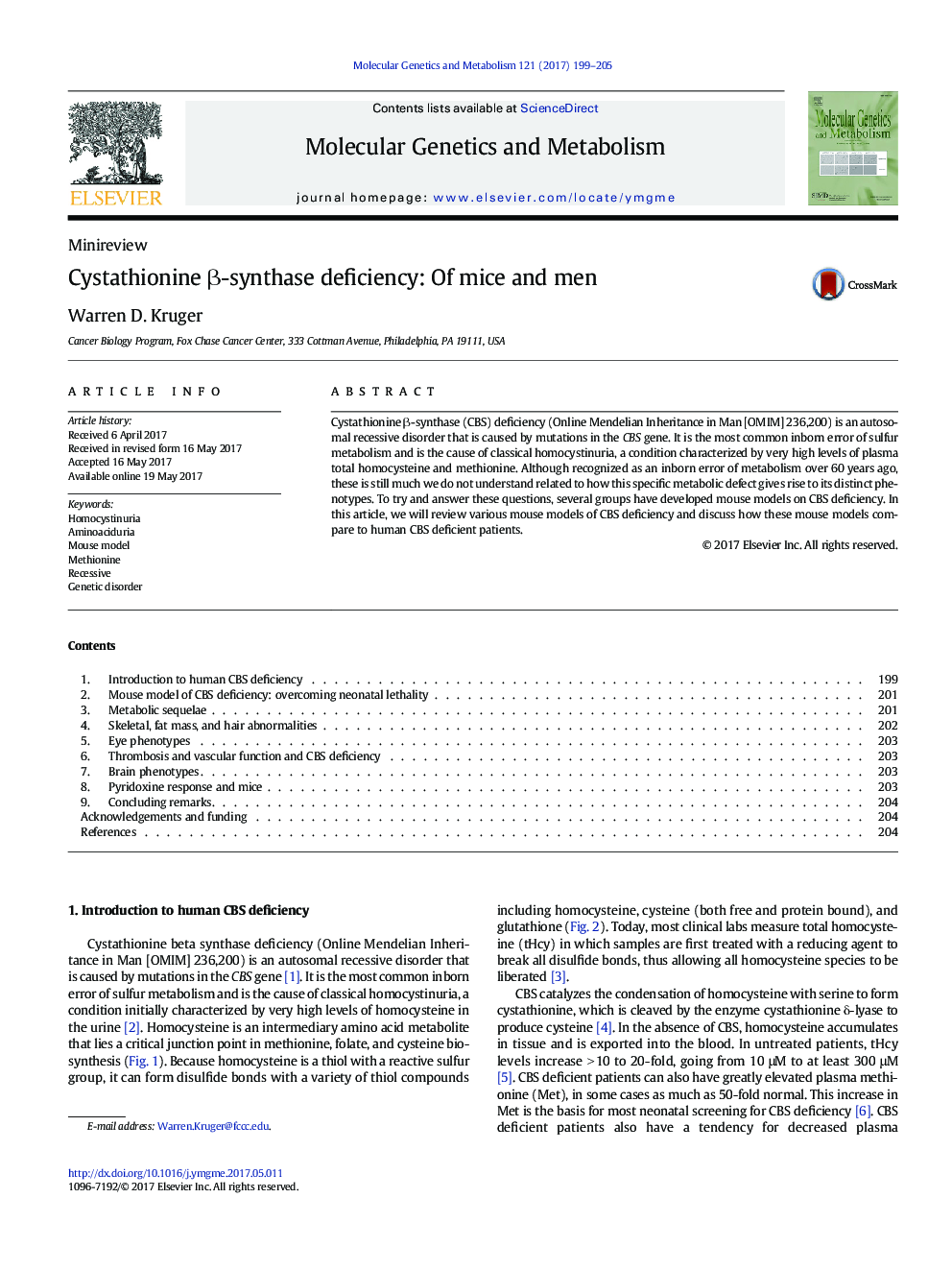| کد مقاله | کد نشریه | سال انتشار | مقاله انگلیسی | نسخه تمام متن |
|---|---|---|---|---|
| 5514048 | 1400694 | 2017 | 7 صفحه PDF | دانلود رایگان |

- Mice lacking CBS suffer from a high degree of neonatal lethality caused by liver failure.
- Neonatal lethality can be overcome by low-level expression of either the wild-type or mutant enzyme
- Mouse models of CBS show extreme elevation in blood total homocysteine, similar to human patients.
- Mouse models of CBS have phenotypes in the skeletal, visual, and vascular systems, but they are not identical to the human condition.
- Replication of the pyridoxine response seen in some human CBS deficient patients has not been replicated in mouse models.
Cystathionine β-synthase (CBS) deficiency (Online Mendelian Inheritance in Man [OMIM] 236,200) is an autosomal recessive disorder that is caused by mutations in the CBS gene. It is the most common inborn error of sulfur metabolism and is the cause of classical homocystinuria, a condition characterized by very high levels of plasma total homocysteine and methionine. Although recognized as an inborn error of metabolism over 60 years ago, these is still much we do not understand related to how this specific metabolic defect gives rise to its distinct phenotypes. To try and answer these questions, several groups have developed mouse models on CBS deficiency. In this article, we will review various mouse models of CBS deficiency and discuss how these mouse models compare to human CBS deficient patients.
Journal: Molecular Genetics and Metabolism - Volume 121, Issue 3, July 2017, Pages 199-205